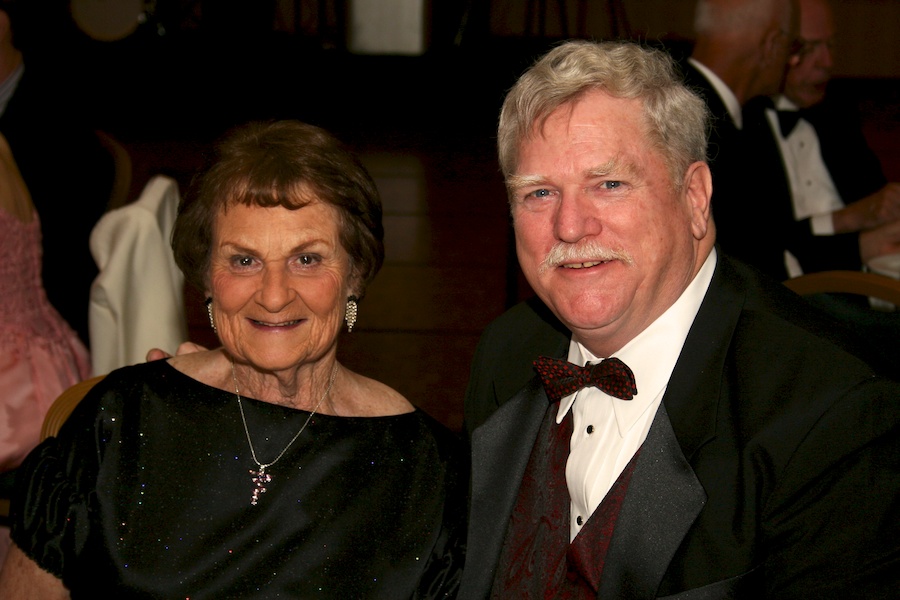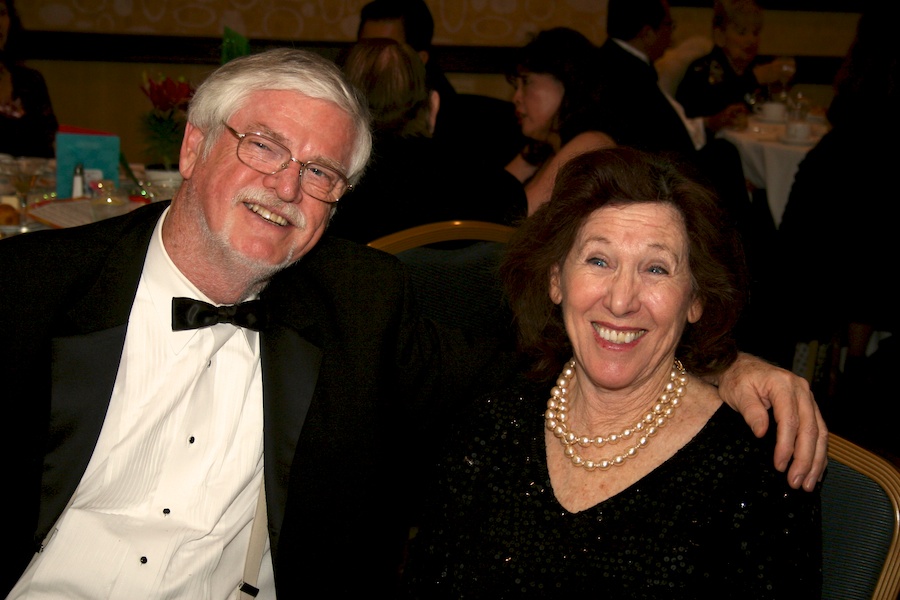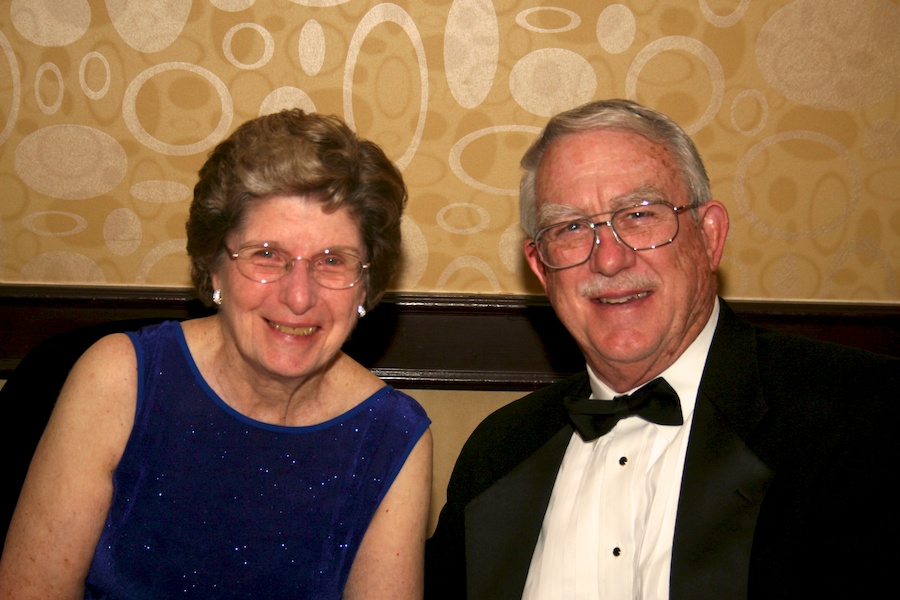Quick Get The Camera, The Dancers Are Sitting Down! (Page Two)
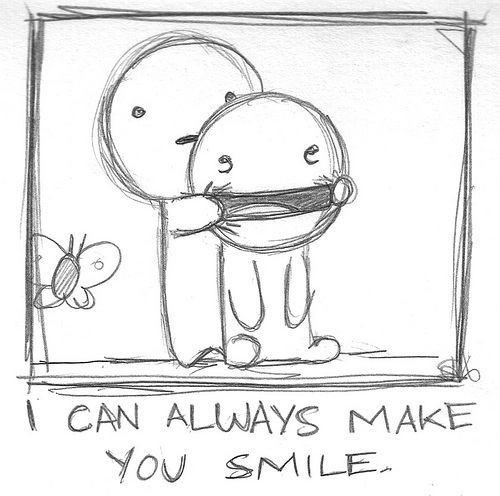
Table #1 - The Balboa

It's NOT fuzzy.... Balboa dancers are just this fast!!!
Did You Know? - Balboa today is commonly used both as a term to describe a fusion of dances that originated in Southern California during the 1920s and 1930s, and also referring to a specific dance from that era that was the original Balboa (sometimes also referred to as Pure-Bal). The original Balboa dance is a form of swing dance that started as early as 1915 and gained in popularity in the 1930s and 1940s. It is danced primarily in close embrace, and is led with a full body connection.
The art of Balboa is in the subtle communication between the lead and follow, including weight shifts, which most viewers cannot see. As a result, Balboa is considered more of a "dancer's dance" than a "spectator's dance". Its exact origins are obscure, especially as most of the original Balboa dancers have since died.
Balboa is danced to a wide variety of tempos. Because the basic step takes up such a small space, Balboa can be danced to fast music (over 300 beats per minute). Balboa is also danced to slow music (under 100 beats per minute), which allows more time for intricate footwork and variations.
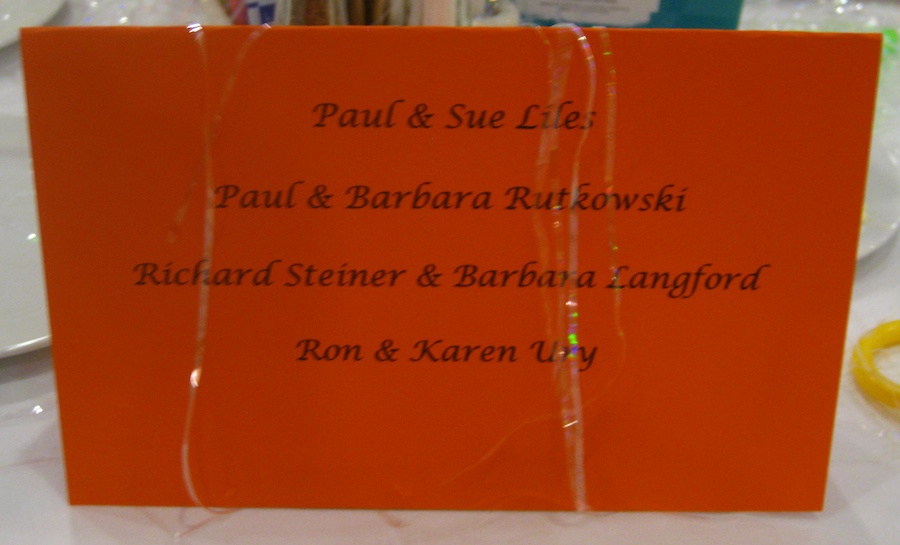
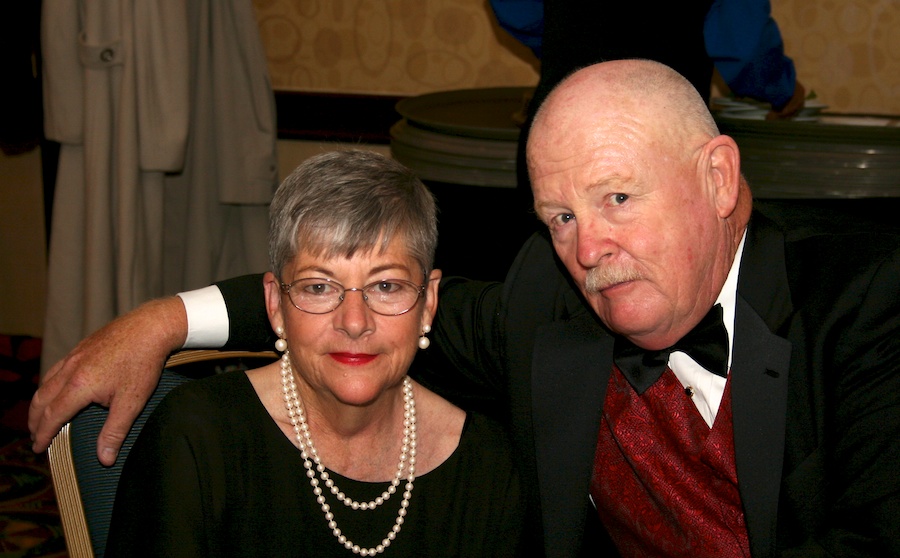
The photographers were captured by the guests
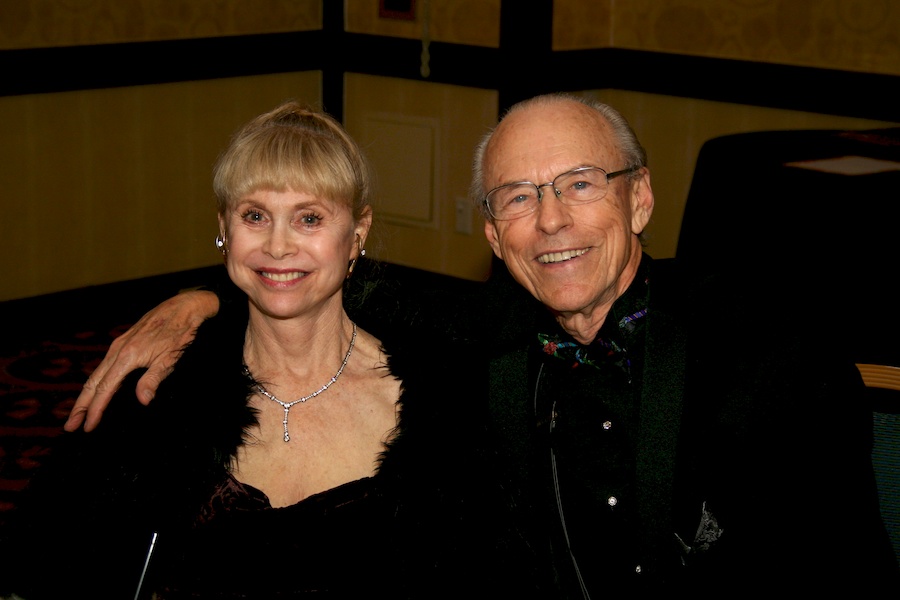
Guests Barbara and Paul Rutowski
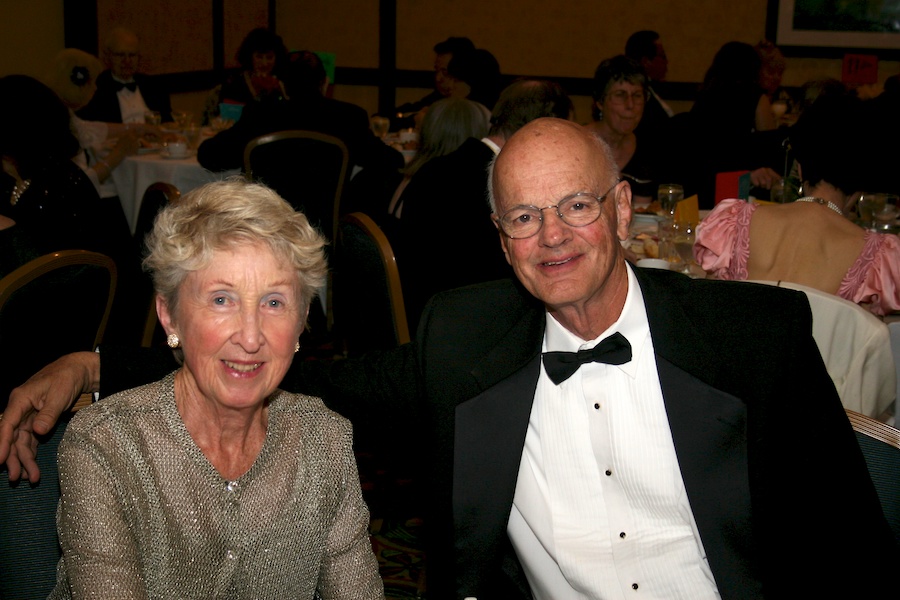
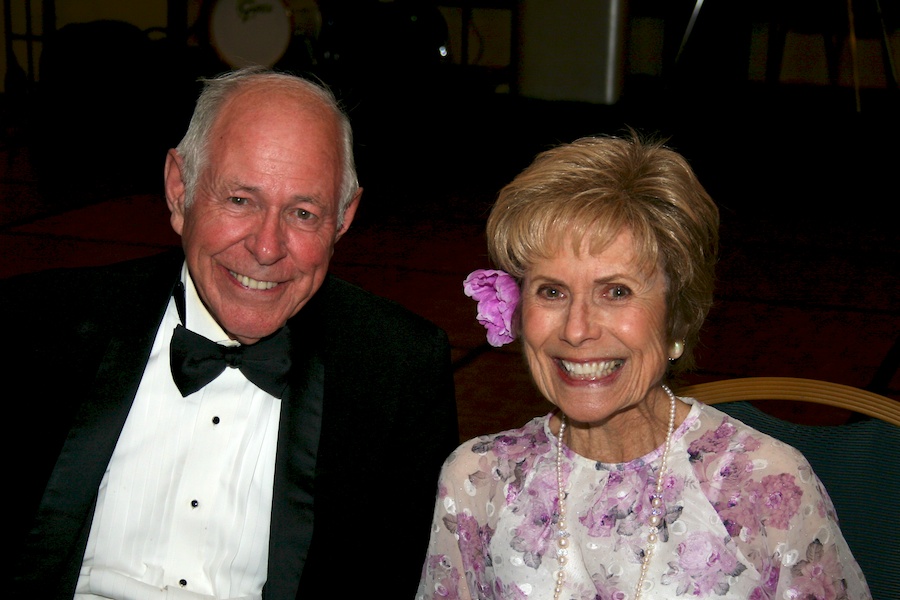
Table #2 - The Collegiate Shag
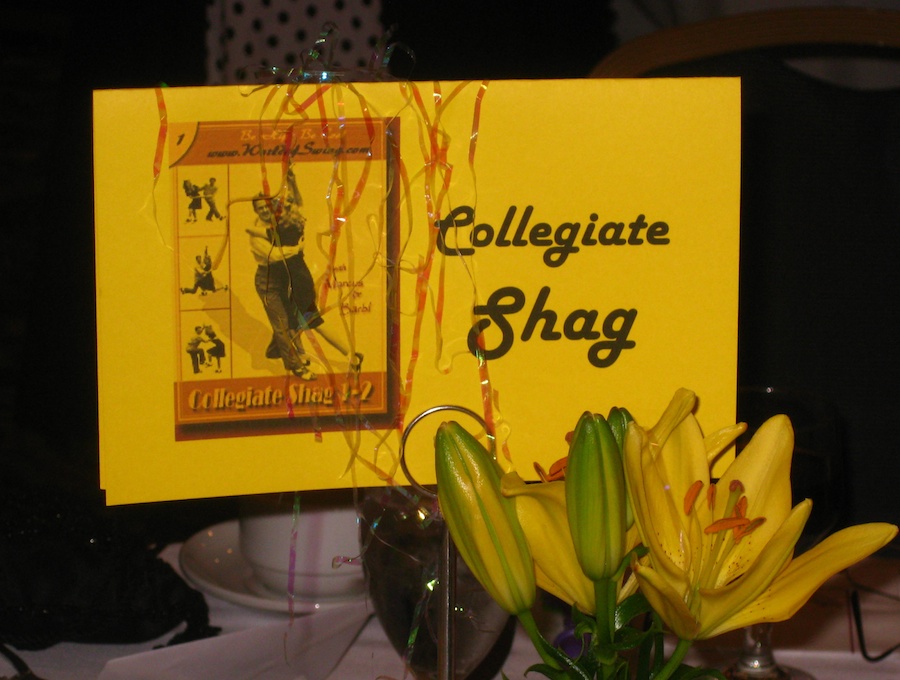
Did You Know? - "Shag" itself (when used in reference to American social dances) is a very broad term used to denote a number of swing dances that originated during the early part of the 20th century. Arthur Murray mentioned Shag in his 1937 book "Let's Dance" This article states that shag was known throughout the entire country under various names, like "Flea Hop".
A New York writer sent to Tulsa, Oklahoma in late 1940/early 1941 noted an "...Oklahoma version of shag done to the Western Swing music of Bob Wills and his Texas Playboys at the Cain's Dancing Academy in Tulsa."
Today the term "Collegiate Shag" is most often used in reference to a kind of double shag (see explanation below) that is believed to have originated in New York during the 1930s. To call the dance "collegiate shag" was not as common during the swing era as it is today, but when it was used (as it was with other vernacular dances of the time) it was meant to indicate the style of the dance that was popular amongst the college crowd.
This name later became somewhat standard in the latter part of the 20th century (see swing revival), presumably because it helped to distinguish the dance from other contemporary dances that share the "shag" designation (e.g., Carolina Shag).
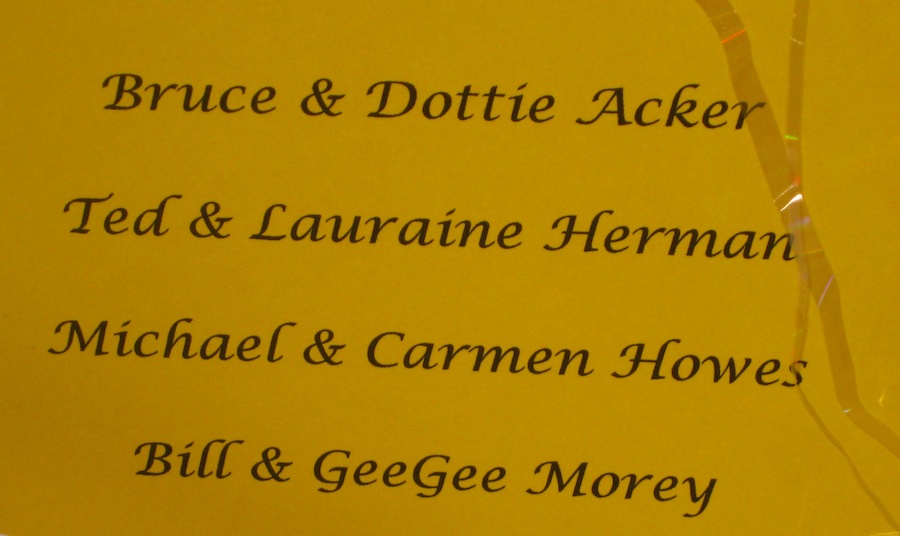
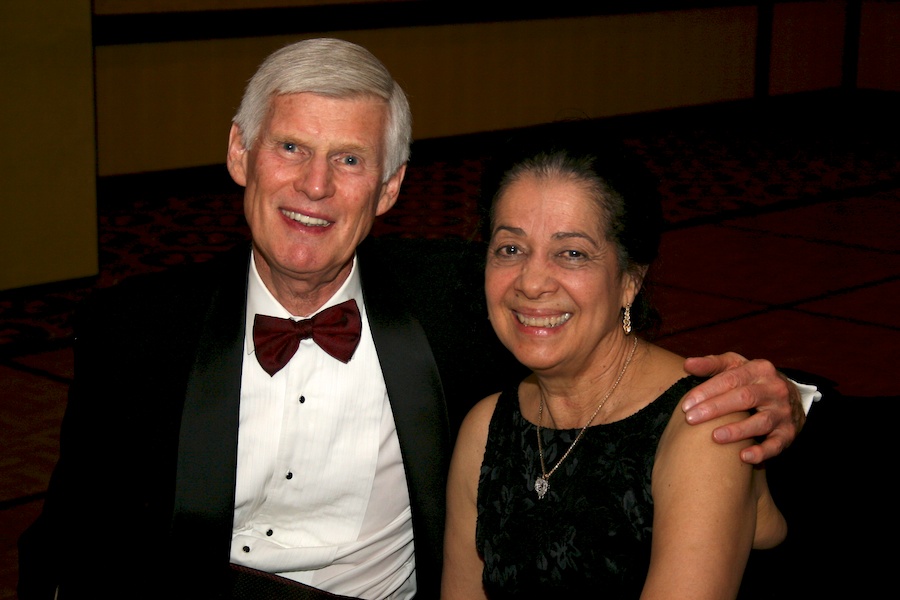

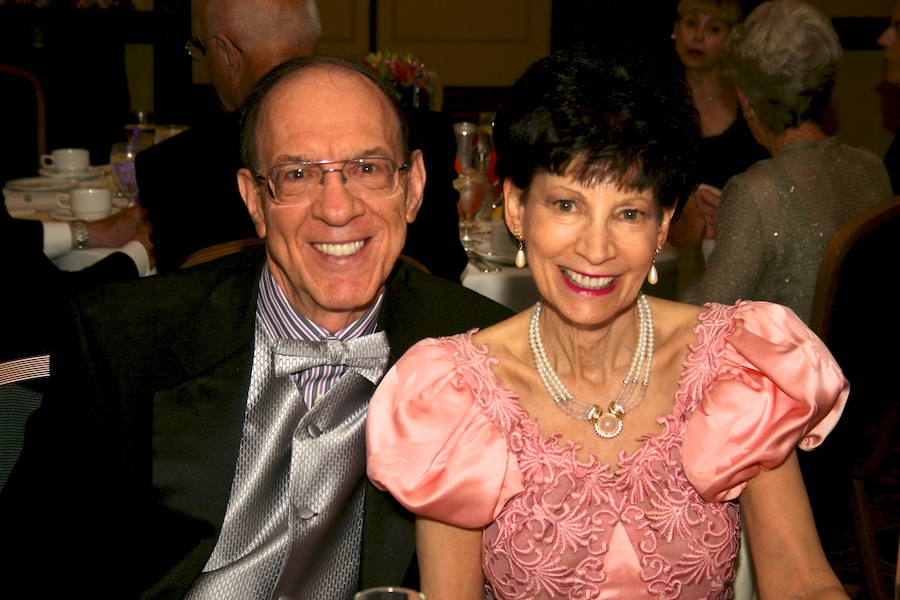

Table #3 - The Jive
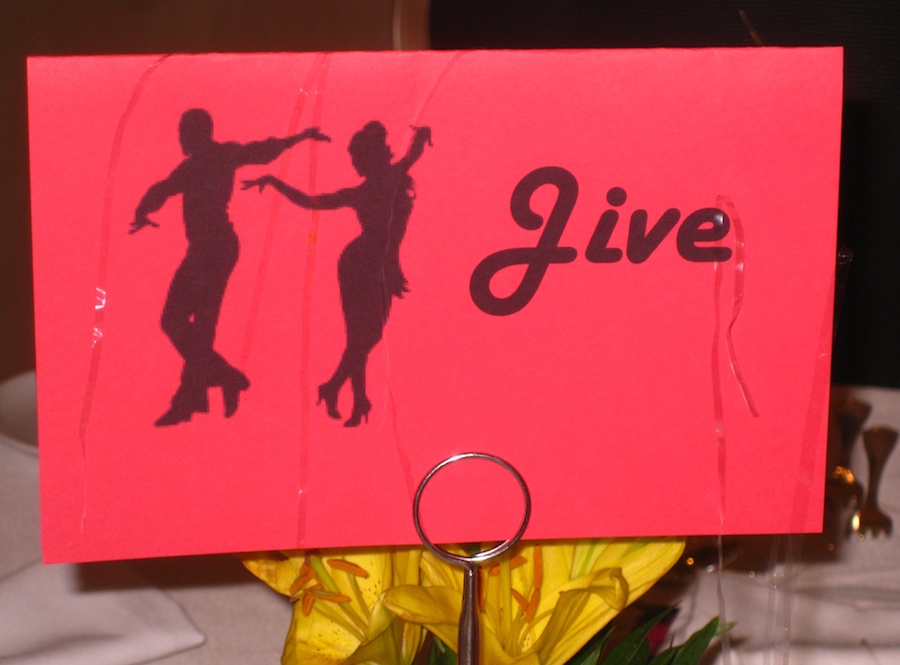
Did You Know? - In Ballroom dancing, Jive is a dance style in 4/4 time that originated in the United States from African-Americans in the early 1930s. It was originally presented to the public as 'Jive' in 1934 by Cab Calloway. It is a lively and uninhibited variation of the Jitterbug, a form of Swing dance. Glenn Miller introduced his own jive dance in 1938 with the song "Doin' the Jive" which never caught on.
Jive is one of the five International Latin dances. In competition it is danced at a speed of 176 beats per minute, although in some cases this is reduced to between 128 and 160 beats per minute.
Many of its basic patterns are similar to these of the East Coast Swing with the major difference of highly syncopated rhythm of the Triple Steps (Chasses), which use straight eighths in ECS and hard swing in Jive. the players of swing music in the 1930s and 1940s "Jive" was an expression denoting glib or foolish talk. Or derived from the earlier generics for giouba of the African dance Juba dance verbal tradition.
American soldiers brought Lindy Hop/Jitterbug to Europe around 1942, where this dance swiftly found a following among the young. In the United States the term Swing became the most common word used to describe the dance.[2] In the UK variations in technique led to styles such as Boogie-Woogie and Swing Boogie, with "Jive" gradually emerging as the generic term.
After the war, the boogie became the dominant form for popular music. It was, however, never far from criticism as a foreign, vulgar dance. The famous ballroom dancing guru, Alex Moore, said that he had "never seen anything uglier". English instructors developed the elegant and lively ballroom Jive, danced to slightly slower music. In 1968 it was adopted as the fifth Latin dance in International competitions. The modern form of ballroom jive in the 1990s-present, is a very happy and boppy dance, the lifting of knees and the bending or rocking of the hips often occurs.

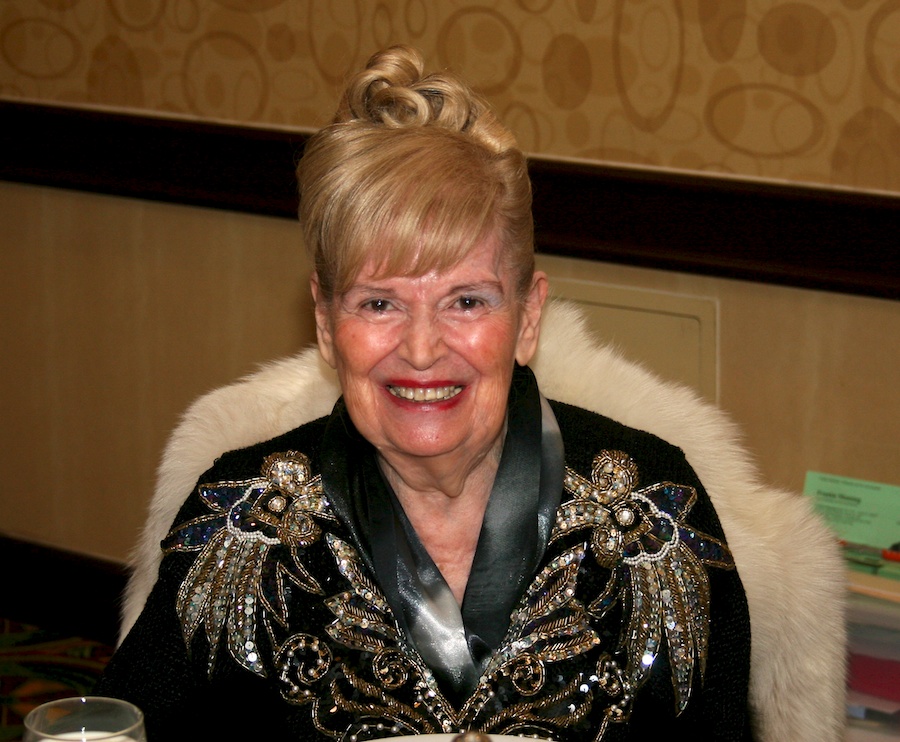
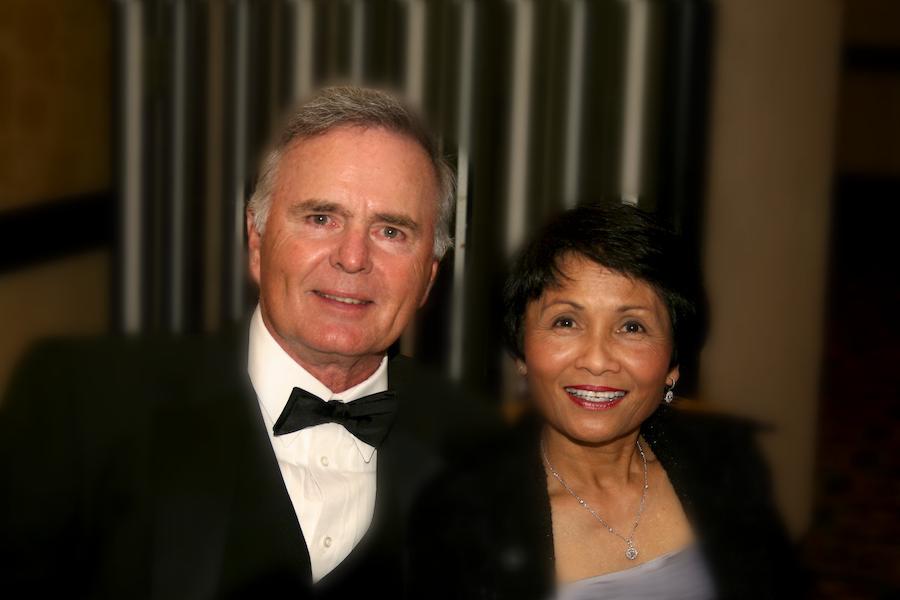

"Toot toot"
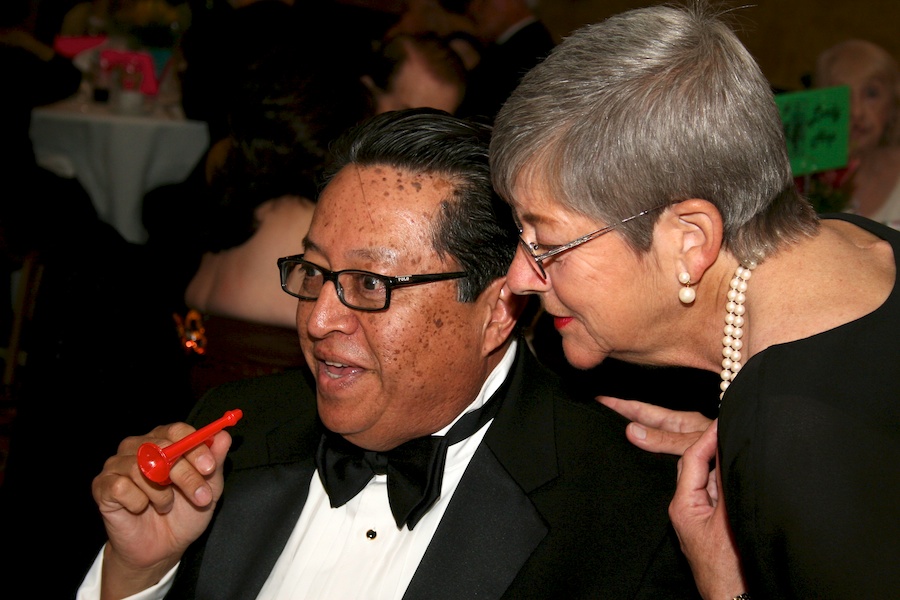
"Ah Jose.... Perhaps not so loud???"
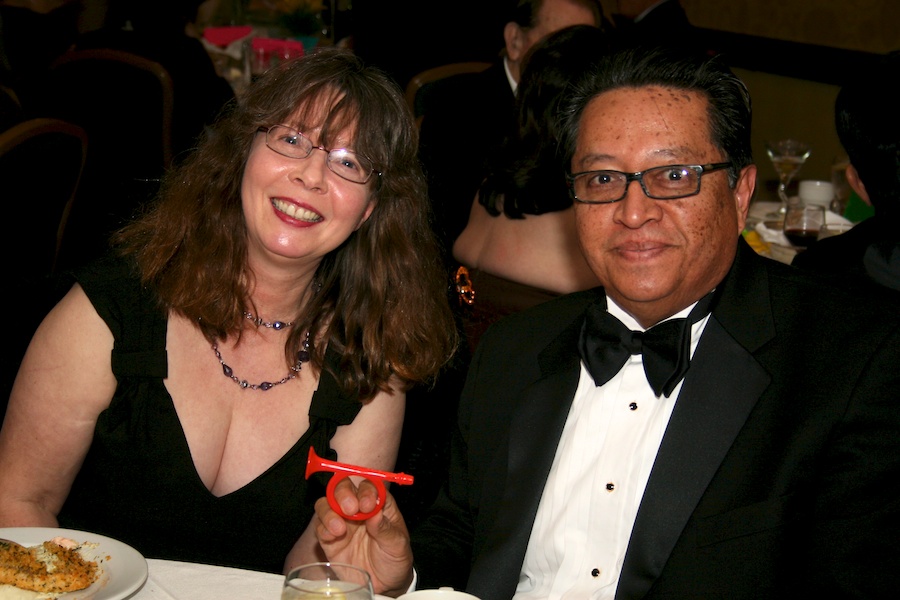
The band and the membership thanks you!
Table #4 - The Lindy Hop
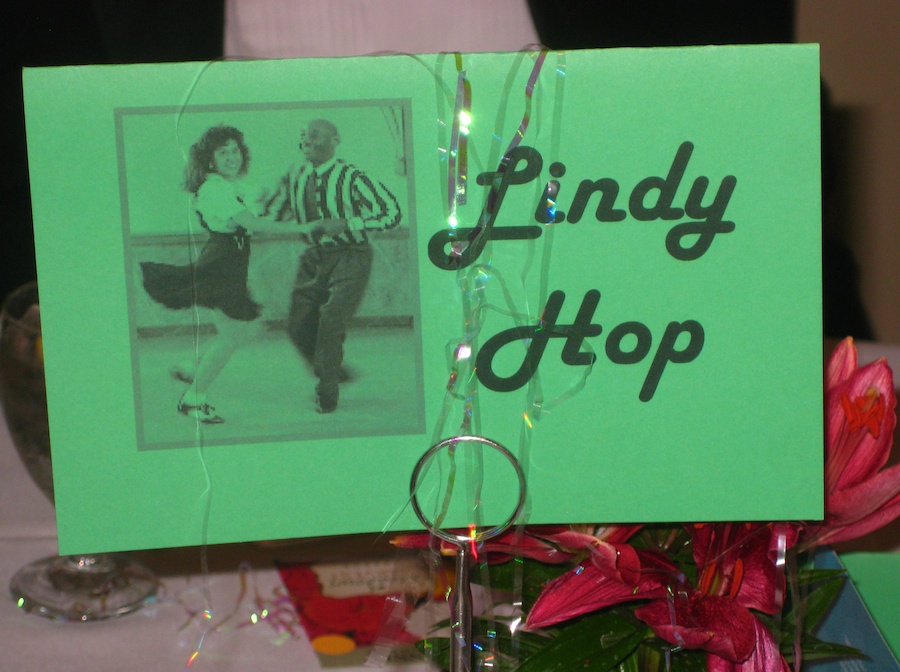
Did You Know? - The Lindy Hop is an American dance that evolved in Harlem, New York City in the 1920s and 1930s and originally evolved with the jazz music of that time. Lindy was a fusion of many dances that preceded it or were popular during its development but is mainly based on jazz, tap, breakaway and Charleston. It is frequently described as a jazz dance and is a member of the swing dance family.
In its development, the Lindy Hop combined elements of both partnered and solo dancing by using the movements and improvisation of black dances along with the formal eight-count structure of European partner dances. This is most clearly illustrated in the Lindy's basic step, the swingout. In this step's open position, each dancer is generally connected hand-to-hand; in its closed position, men and women are connected as though in an embrace.
Revived in the 1980s by American, Swedish, and British dancers, the Lindy Hop is now represented by dancers and loosely affiliated grass roots organizations in North America, South America, Europe, Asia, and Oceania.



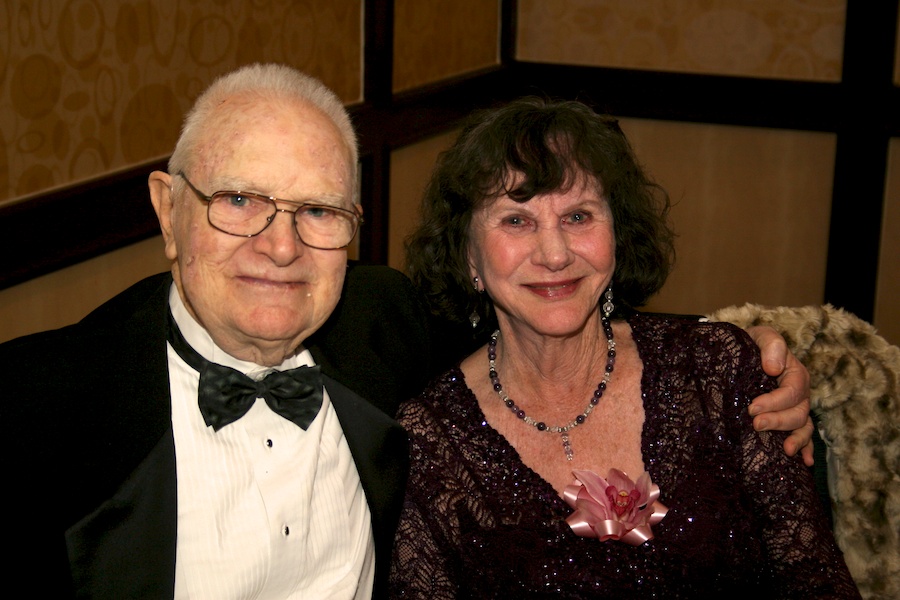
Table #5 - The West Coast Swing
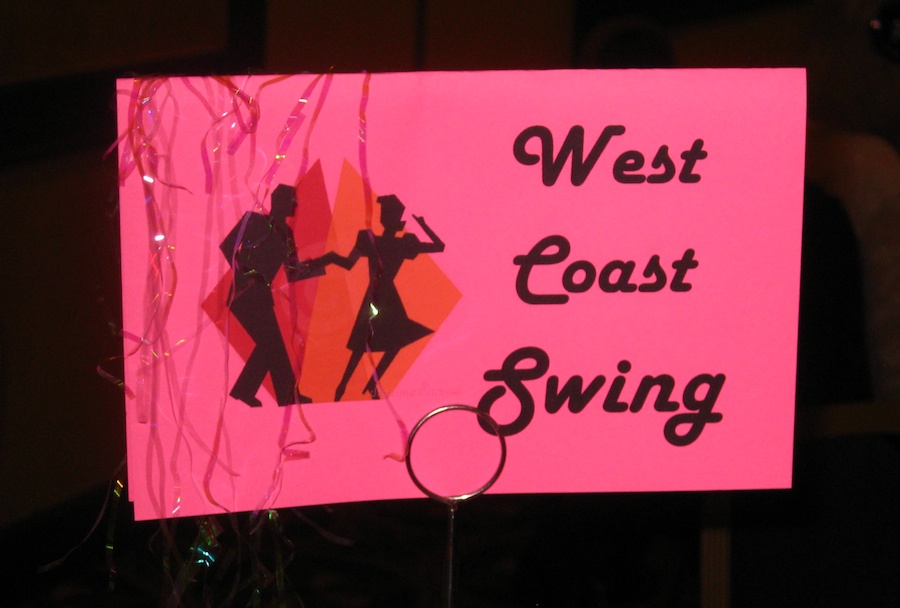
Did You Know? - It is believed that the origins of the WCS are in Lindy Hop. In a 1947 book, Arthur Murray recognized that, "There are hundreds of regional dances of the Jitterbug type. Each section of the country seems to have a variation of its own."
Dean Collins, who arrived in the Los Angeles area around 1937, was influential in developing the style of swing danced on the West Coast of the United States, as both a performer and teacher. When his wife, Mary Collins, was asked if Dean was responsible for the emergence of the dance, however, she said that Dean insisted there were "only two kinds of swing dance - good and bad".
Lauré Haile, Arthur Murray National Dance Director, and an instructor of teachers documented swing dancing as done in the Los Angeles area and used the name "Western Swing". Murray had used the same name, "Western Swing", in the late 1930s for a different dance. Haile included Western Swing in Dance Notebooks she authored for Arthur Murray during the 1950s. Western Swing was also called "Sophisticated Swing" in the 1950s.
Dancing to musicians wearing cowboy hats and string ties playing fiddle, steel guitar, etc. Pumpkin Center, Bakersfield, CA 1950s
Western swing, country boogie, and, with a smaller audience, jump blues were popular on the West Coast throughout the 1940s and into the 1950s when they were renamed and marketed as rock 'n' roll in 1954. Dancers danced "a 'swingier' - more smooth and subdued" form of Jitterbug to Western Swing music.
West Coast Swing (still known as Western Swing at that time) is the basis for the dancing in the rehearsal scene in "Hot Rod Gang" (1958). Music is supplied by rockabilly musician Gene Vincent's "Dance to the Bop". The song alternates between very slow sections and those with the rapid pace and high energy of rockabilly.
Staged by a young Dick Di Augustin, the dancing includes recognizable patterns such as the chicken walk, swing out from closed position, etc., along with the classic woman's walk walk triple step triple step at the end of the slot. On the final step of the second triple the women are weighted left with the right heel on the floor and the toes pointed up. Dancers also do classic Lindy flips at the end of the slot, as well as non partner, non West Coast Swing movements.

